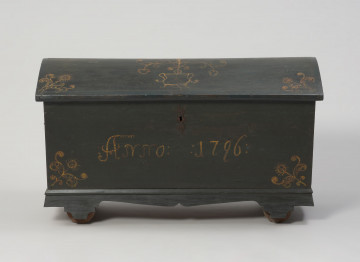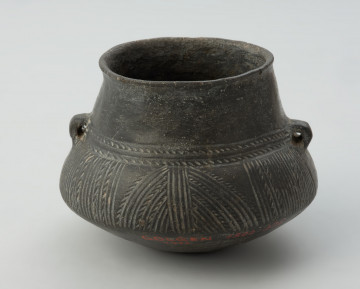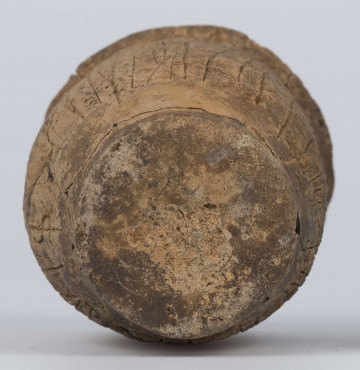
Chest
1796
National Museum in Szczecin
Part of the collection: Bronze Age
The bronze crucible tongs were found in a cremation grave on a cremation cemetery, excavated in 1885. They are classified as toilet instruments used during the Early Bronze Age by the population of the Lusatian culture. In the regions occupied by the Lusatian population some vast, multigenerational flat and barrow cemeteries were discovered. The barrow burial customs had been performed the longest in the Western Pomerania region. Metal objects, like ornaments, knives, and tongs, are relatively rare findings in cremation graves, while ceramic, the so-called accessory vessels placed with an urn, are more common. The most impressive barrow burial sites are the princely graves, with the name granted due to their rich furnishing. In the Western Pomerania region, only one such grave was recorded so far in the vicinity of Banie. The discovery showed cremated remnants of one individual, and the grave was furnished with numerous bronze items, the majority of which resembled products manufactured in southern Europe and the regions of Nordic Bronce Age culture (northern Germany, Denmark, and the Southern Scandinavian Peninsula). The burial method, quantity, and quality of burial offerings indicate the special social status of the deceased.
Monika Witek
Author / creator
Dimensions
the entire object: height: 8 cm, width: 2 cm
Object type
hygiene utensils
Technique
casting
Material
bronze
Origin / acquisition method
legal transfer
Creation time / dating
Creation / finding place
Owner
National Museum in Szczecin
Identification number
Location / status

1796
National Museum in Szczecin

around 750 p.n.e. — 550 p.n.e.
National Museum in Szczecin

III-V period
National Museum in Lublin
DISCOVER this TOPIC
National Museum in Szczecin
DISCOVER this PATH
Educational path